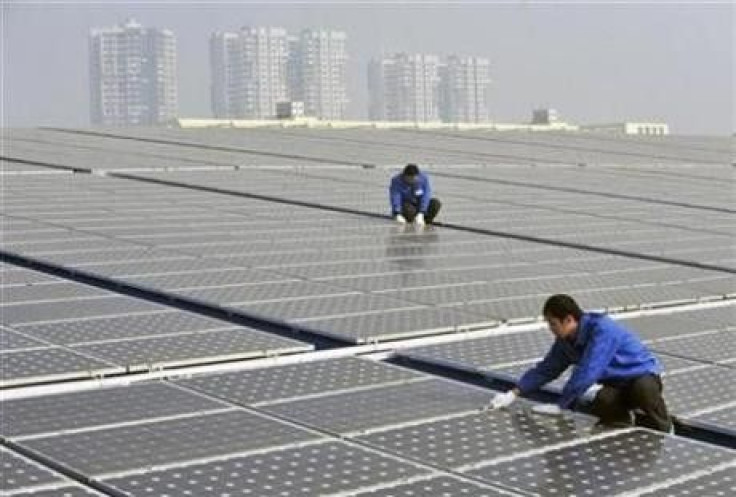China green energy investment makes sense

China is a big player in the green energy market.
In 2009, it ousted the U.S. to become the number one spender, according to the Pew Charitable Trusts.
It's huge, said Ed Lay of Emeritus International Group, an investment advisory firm that's involved in the solar energy and battery technology market.
He said by current estimates, China is spending $12 million a minute on some aspect of renewable energy, with solar energy leading the charge.
So why is the second largest economy in the world pouring so much money into green energy?
Lay and Wai-Keung Tang, also of Emeritus, think China is doing it out of self-interest.
Tang thinks one of the biggest concerns of the Chinese government is pollution. China knows that it cannot keep on powering a population of 1.3 billion by burning fossil fuels like coal, which is one of the more environmentally damaging sources of energy.
Lay added that if China were to fully industrialize without green energy - like the way the U.S. and U.K. did - it would be devastating for the domestic and global environment. The Chinese government knows this and will likely avoid this path for its own sake.
A second aspect is probably cost.
For renewable energy products, the break-even point, i.e. how fast it will save enough energy to compensate for the cost of making it, depends on how long the time frame is.
Right now, cutting-edge commercial solar panels have solar energy conversion efficiencies approaching 50 percent, which makes the break-even time about eight to ten years, said Tang.
The Chinese (and other Asian governments) are known for their long-sighted thinking, so ten years is certainly a reasonable time-frame. Furthermore, as conversion rates push higher, the break-even time will shorten.
Being in the green energy game, therefore, will only become more and more beneficial as time goes on.
Some speculate that a third reason is reducing oil dependence, a theory that Tang thinks has some merit.
China, a large and growing importer and consumer of oil, gets most of its supply via tankers from the Middle East.
These tankers leave the Strait of Hormuz between Iran and Oman/United Arab Emirates; travel eastward in the Indian Ocean, pass below the southern tip of India, then through the Malacca Strait located between Malaysia and Indonesia and finally up the South China Sea to arrive at ports in southeast China.
The long transport distance leaves the China-bound tankers vulnerable to foreign threats in the event of future national conflicts.
Chinese officials are worried about this and have already begun to push for oil pipelines (from Pakistan and Burma, for example, according to Dean Cheng of the Heritage Foundation) to reduce this dependence.
Developing green energy, then, could be another way that China is hedging against the threat of energy supply shocks.
Email Hao Li at hao.li@ibtimes.com
© Copyright IBTimes 2024. All rights reserved.











